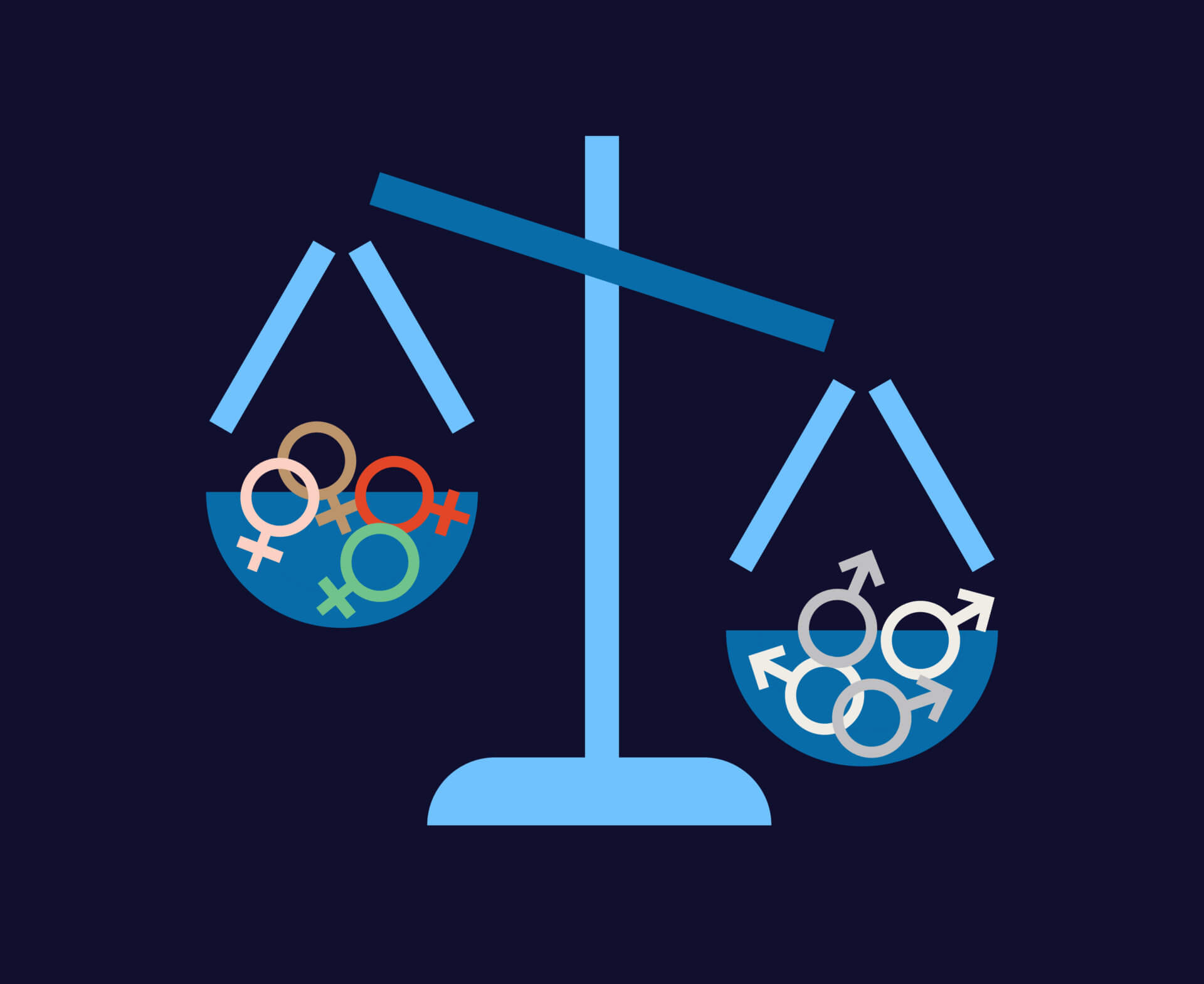- CEOCap
- Jaime Watt’s Debut Bestseller ‘What I Wish I Said’
- Media Training
- The Push Back
- Internship program
- Update Your Profile
- Homepage
- It’s time for a change
- It’s time for a change
- Kio
- Ottawa
- Art at Navigator
- Navigator Limited Ontario Accessibility Policy
- Virtual Retreat 2020 Closing Remarks
- COVID-19 Resources
- Offices
- Navigator Sight: COVID-19 Monitor
- Navigator Sight: COVID-19 Monitor – Archive
- Privacy Policy
- Research Privacy Policy
- Canadian Centre for the Purpose of the Corporation
- Chairman’s desk
- ELXN44
- Media
- Perspectives
- Podcasts
- Subscribe
- Crisis
- Reputation
- Government relations
- Public affairs campaigns
- Capital markets
- Discover
- studio
- How we win
- What we believe
- Who we are
- Careers
- Newsroom
- AI
- Empower by Navigator
- Environmental responsibility

THIS YEAR’S THEME for International Women’s Day is “Choose to Challenge”, a direct appeal to question and confront gender bias and inequality where we see it. It’s a noble call to action but a difficult thing to do in practice — discussions about equity, diversity and inclusion often elicit strong reactions, particularly in corporate settings.
“Making gender equity a priority means being more than just performative — it means challenging the idea that equity means parity alone.”
As a result, corporate Canada has tended to lean heavily on the numbers. Proportionate representation — or parity — between men and women has become the gold standard of gender equity around the boardroom table. Parity is clear. It’s measurable. And frankly, saying you have gender parity is one heck of an issues management strategy.
However, talking about amorphous ideas like culture, acceptance, respect, and inclusion is a lot more challenging. Messy even. But it’s also necessary. Making gender equity a priority means being more than just performative — it means challenging the idea that equity means parity alone.
To be clear, on the parity front Canada is nowhere near perfect. We appear to do relatively well, ranking in the top 20 of the World Economic Forum’s Global Gender Gap Index as one example.1 However, our efforts to bridge the gender gap remain very much a work in progress. In January, a Globe and Mail investigative series called “The Power Gap” grabbed the attention of Canadian public and private sector companies.2 It found that across publicly owned corporations, governments, municipalities, and universities, there were “dramatically” more men in high-paying jobs, on executive teams, and leading organizations.
But this was only part of that story. Another key finding in the series was that women face other challenging barriers to success. Reporter Robyn Doolittle relays the story of a female fundraiser who was punished for speaking up against a male executive who was bullying her. She speaks of a scientist who was refused research funding but was asked to appear in promotional materials for her organization because they wanted to appear “more inclusive”. Doolittle also tells the story of an administrator whose boss revoked a promotion because he was frustrated she was pregnant.
A lack of women in leadership roles may be partly corrected with parity. But the roots of the other barriers are cultural and structural in nature. The people within these institutions committed the acts, but the culture and structures within these institutions allowed them to happen.
That’s the problem with talking about parity alone — it gives institutions an “out”. A company might say it is meeting its obligations because it has equal numbers of men and women in certain positions. But what if these women are being paid less than their male counterparts? What if they are being given less challenging or lucrative projects? Or they are being sidelined when it’s time to lead the company presentations? Public-facing numbers rarely account for these types of details.
That is exactly why parity policies need to be accompanied by real cultural and structural changes too. Behind the numbers, marketing slogans, and exceptional success stories, are less obvious but equally high barriers that need to be challenged. And that requires organizations to take a long, hard, introspective look at themselves — something that can be awkward, uncomfortable, or even risky to do.
But if organizations did this important work, what kinds of barriers might they find?
There are a litany of possibilities, and every organization will be different, but they might find that their existing human resources structures don’t encourage — or worse, foster fear — of speaking out when inequity is experienced or identified. Higher-ranking employees may be given the benefit of the doubt when concerns are raised. Colleagues may be type casted as “squeaky wheels” for coming forward. Colleagues may bring forward an issue but be told to address it themselves.
With high-intensity workplaces, there may be an expectation that employees stay late at the office, come in on weekends or take limited time off. But this kind of flexibility is usually only an option for those employees who don’t have children, family members with complex needs, or other responsibilities during their off hours. A lack of flexibility – whether in terms of when work is completed during the day, or where this work can be accomplished – can be a very real obstacle for caretakers, a significant number of whom are women.
Like many Canadian institutions, an organization may also find that pay equity is a concern. Statistics Canada reports that women are, on average, earning about 0.89 cents for every dollar a man earns.3 Some cases are more dire than others.4 As one example, a recent look into Canada’s largest law practices revealed that female equity partners are earning 25 per cent less — around $200,000 — than their male colleagues. A lack of transparency on salaries and a lack of clarity on performance targets both contribute to the gap. But culture also appears to be a factor — through her work, Robyn Doolittle found numerous studies that revealed that women tend to be judged more negatively when they try to negotiate their own salaries.
An in-depth look at an organization’s workplace culture might also reveal that its leadership has tended to prefer certain characteristics, ways of acting, ways of speaking, or even certain people, over others. The easiest, but by no means only, example is that of an “old boys club” that encourages or even promotes the stereotypical behaviour of one specific group. At best, long-engrained cultural norms like these can make people feel like outsiders. At worst, they can create environments where harassment and bullying can fester unchecked.
These are only four short examples, but you may have noticed that parity isn’t the magic bullet solution to any of the problems identified — cultural and structural changes are. The good thing is that making cultural and structural change — while impacting women and BIPOC individuals most positively — actually benefits everyone. We can all get behind a human resources process that acts when a concern is raised. COVID-19 has proven we can all get behind more flexible work times and spaces. Addressing pay equity ensures a level playing field and embracing a more open culture allows all of us to present our truest selves at the office.
Change requires concerted effort and time, but embracing it can improve an organization’s standing, from staff retention, to morale, to financial performance. None of this work is easy, but it’s worth it. This year, when we think about International Women’s Day, we should commit to change where it matters most and challenge ourselves to start thinking beyond the numbers.
[1] http://www3.weforum.org/docs/WEF_GGGR_2020.pdf[2] https://www.theglobeandmail.com/canada/article-power-gap/[3] https://www150.statcan.gc.ca/t1/tbl1/en/tv.action?pid=1410034002[4] https://www.theglobeandmail.com/canada/article-female-partners-earn-less-than-male-colleagues-at-big-law-firm/


